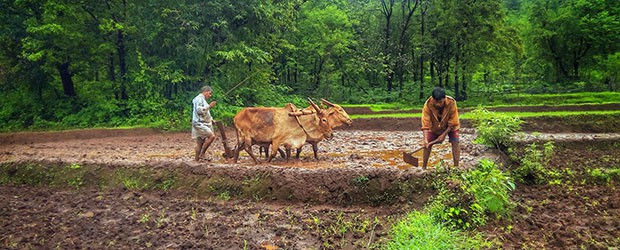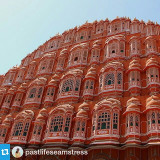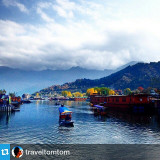Random image from our India photo collection

Sikkim
History
Buddhism, the major religion in the state, arrived from Tibet in the 13th century. It took its distinctive Sikkimese form four centuries later, when three Tibetan monks of the old Nyingamapa order, dissatisfied with the rise of the reformist Gelukpas, migrated to Yoksum in western Sikkim.
Having consulted an oracle, they went to Gangtok looking for a certain Phuntsong Namgyal, whom they crowned as the first Chogyal or 'Righteous King' of Denzong in 1642. Being the secular and religious head, he was soon recognized by Tibet, and brought sweeping reforms. His kingdom was far larger than today's Sikkim and included Kalimpong and parts of western Bhutan.
Over the centuries, the territory was lost to the Bhutanese, the Nepalese and the British. The British policy to diminish the strong Tibetan influence resulted in the import of workers from Nepal to work in the tea plantations of Sikkim, Darjeeling and Kalimpong and these soon outnumbered the indigenous population.
After India's Independence, the eleventh Chogyal, Tashi Namgyal, strove hard to prevent the dissolution of his kingdom. Officially, Sikkim was a protectorate of India, and the role of India became increasingly crucial with the Chinese military build-up along the northern borders that culminated in an actual invasion early in the 1960s.
The next king Palden Thondup was a weak ruler and in 1975, succumbed to the demands of the Nepalese majority of becoming a part of India.
Go back
Having consulted an oracle, they went to Gangtok looking for a certain Phuntsong Namgyal, whom they crowned as the first Chogyal or 'Righteous King' of Denzong in 1642. Being the secular and religious head, he was soon recognized by Tibet, and brought sweeping reforms. His kingdom was far larger than today's Sikkim and included Kalimpong and parts of western Bhutan.
Over the centuries, the territory was lost to the Bhutanese, the Nepalese and the British. The British policy to diminish the strong Tibetan influence resulted in the import of workers from Nepal to work in the tea plantations of Sikkim, Darjeeling and Kalimpong and these soon outnumbered the indigenous population.
After India's Independence, the eleventh Chogyal, Tashi Namgyal, strove hard to prevent the dissolution of his kingdom. Officially, Sikkim was a protectorate of India, and the role of India became increasingly crucial with the Chinese military build-up along the northern borders that culminated in an actual invasion early in the 1960s.
The next king Palden Thondup was a weak ruler and in 1975, succumbed to the demands of the Nepalese majority of becoming a part of India.
Go back









